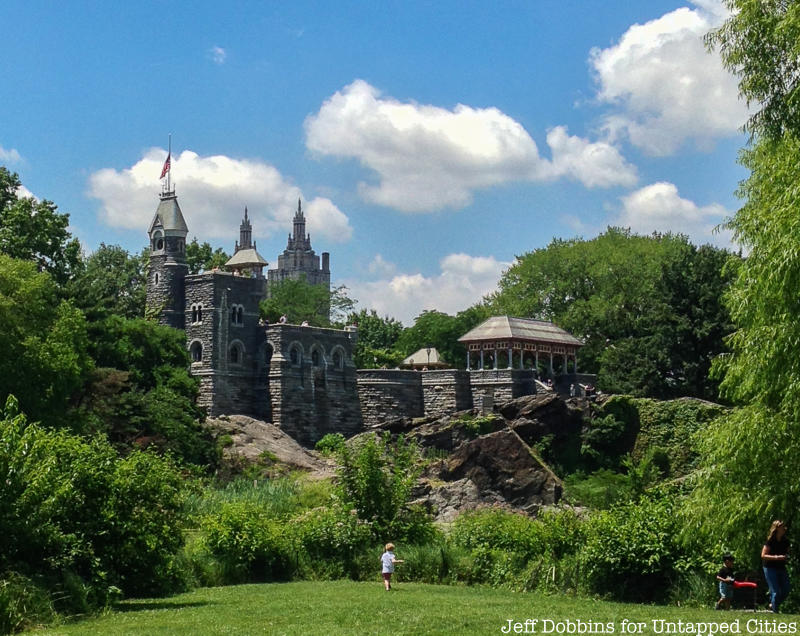4. Central Park

Central Park is probably one of the best locations to take in Manhattan schist (and Hartland Schist) both in terms of large outcroppings, like at Belvedere Castle and Umpire Rock near 63rd Street and Central Park West, and glacial striations. As described by the Central Park Conservancy:
The schist was formed from sedimentary shale by intense subterranean heat and pressure some 450 million years ago in the Paleozoic Era. While the schist of Umpire Rock was being formed, it was twisted and folded by upheavals in the earth’s depths. Minerals scattered in the former shale were fused into crystals of quartz, mica, feldspar and garnet within the schist. Lighter-colored veins of granite and coarser granite pegmatite are visible across the grain. These inlays were actually once liquefied rock from the earth’s interior before they were injected into fissures in the schist and cooled into bands of solid rock.
Another fun thing to look for, while in search of schist, is the bolt (pictured below), believed to be one of the original survey bolts from when the Commissioner’s planned out for Manhattan. Central Park was not in the original plan, so street intersection points may have been marked but still exist because no street was ever built there. The bolt is in the park, inserted in schist, but the exact location is kept a secret for fear that it will be stolen or destroyed.






